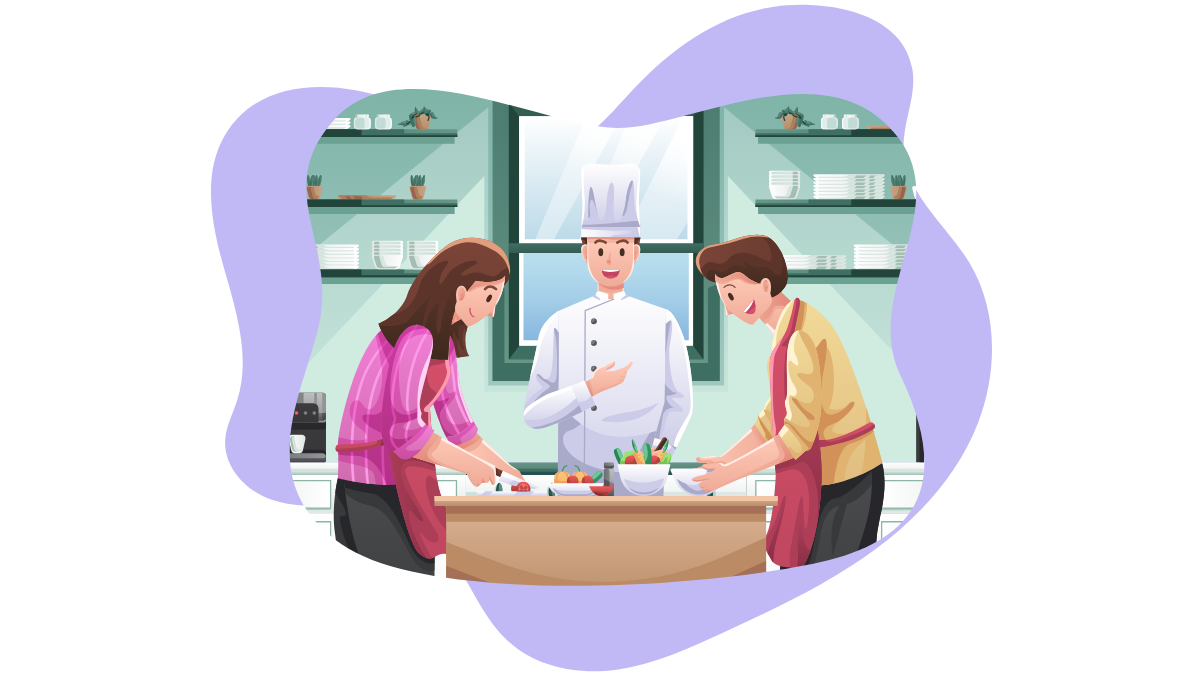Social media platforms provide an excellent space for promoting cooking classes, engaging with food enthusiasts, and showcasing culinary expertise. This guide outlines effective strategies to leverage social media for increased visibility, engagement, and enrollment in cooking classes.
Target Audience
Identify the primary audience for cooking class social media marketing:
- Home Cooks & Cooking Enthusiasts – Engaging individuals passionate about cooking, seeking to enhance skills or learn new cuisines.
- Parents & Families – Targeting parents interested in family cooking experiences or teaching children culinary skills.
- Students & Young Adults – Attracting students looking for essential cooking skills or budget-friendly meal ideas.
- Foodies & Culinary Explorers – Engaging with food enthusiasts interested in diverse cuisines, techniques, and unique recipes.
Goals
Define the objectives of utilizing social media for cooking class marketing:
- Class Promotion & Enrollment – Showcasing class themes, culinary skills, and encouraging enrollments or registrations.
- Special Workshops & Events – Advertising themed workshops, seasonal classes, live cooking demos, or guest chef sessions.
- Brand Differentiation & Expertise – Establishing the cooking school as a hub for quality instruction, diverse cuisines, and culinary creativity.
- Engagement & Community Building – Fostering engagement, sharing cooking tips, recipes, and building a community of food lovers.
Platforms to Focus On
Identify key social media platforms for cooking class marketing:
- Instagram – Visual platform showcasing culinary creations, class activities, student testimonials, and behind-the-scenes insights.
- Facebook – Utilize business pages, event promotions, live cooking sessions, and engagement with local communities and food enthusiasts.
- Pinterest (Optional) – Create boards featuring recipes, cooking tips, themed cuisines, and food presentation ideas.
- YouTube – Share cooking tutorials, recipe demonstrations, chef interviews, and virtual cooking classes.
Content Strategies
Develop content strategies tailored for cooking class marketing:
- Recipe Showcases & Cooking Demos – Sharing step-by-step recipe demos, cooking techniques, and visual guides for dishes taught in classes.
- Class Promotions & Offerings – Highlighting class schedules, themed cuisines, instructor profiles, and culinary skill development.
- Quick Cooking Tips & Hacks – Providing short, useful cooking tips, time-saving techniques, or kitchen hacks.
- Behind-the-Scenes & Chef Moments – Offering glimpses into cooking sessions, chef stories, ingredient selection, and kitchen setup.
Engagement & Conversion Tactics
Implement strategies to engage potential students and convert social media traffic into class enrollments:
- Call-to-Action (CTA) – Encouraging followers to enroll, sign up for trial classes, or attend live cooking sessions.
- Live Cooking Sessions & Q&A – Hosting live sessions featuring cooking demonstrations, Q&A with chefs, or culinary discussions.
- Student Features & Testimonials – Showcasing student experiences, success stories, or testimonials about learning outcomes.
- Recipe Contests & Challenges – Engaging users in cooking challenges, recipe contests, or interactive activities related to class themes.
Analytics & Optimization
Utilize analytics to measure and optimize social media performance for enrollments, engagement, and student satisfaction:
- Engagement Metrics – Monitor likes, comments, shares, and engagement across social media platforms.
- Conversion Tracking – Track website visits, class inquiries, trial sign-ups, or enrollments from social media referrals.
- Audience Insights – Understand demographics, culinary interests, and engagement patterns for targeted content.
- Campaign Optimization – Adjust strategies based on performance, analyze successful content, and refine targeting.
Challenges & Solutions
Address potential challenges in cooking class social media marketing:
- Seasonal Demand & Capacity – Managing class sizes, scheduling, and promoting off-peak discounts or extended courses.
- Student Retention & Satisfaction – Ensuring quality instruction, providing feedback, and addressing student queries promptly.
- Differentiation & Marketing in Competitive Markets – Showcasing unique class offerings, diverse cuisines, and culinary expertise.
- Building Trust & Relatability – Communicating class benefits, chef expertise, and engaging content to build student trust.
Conclusion
Leveraging social media effectively can significantly enhance brand visibility, engagement, and enrollments for cooking classes. This guide provides a roadmap for engaging food enthusiasts, sharing culinary expertise, and building a strong online presence in the culinary education industry.



